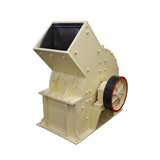Having observed the pulp mill debate in the media and watched it approach its climax this week I am concerned that a very key issue is being neglected. Can Tasmania's production forests produce enough wood to supply a world-scale pulp mill for the next few decades?
I have examined three key documents that were produced as part of the assessment process for the pulp mill: the Gunns Limited Integrated Impact Statement (IIS); an Expert Witness Statement prepared for Gunns Limited and an Independent Review of the IIS on Wood Flow Assumptions prepared for the Resource Planning and Development Commission. I also draw upon my own knowledge of the productivity of eucalypt plantations in Tasmania and their current capacity to supply pulpwood.
I have come to the conclusion that projected wood flows may not meet the requirements of the mill over its lifetime, and that supplying large amounts of wood to a pulp mill neglects consideration of existing and new opportunities to add greater value to wood. Kraft pulp mills, once operational, require wood on a continuous basis.
WOOD SUPPLY AND FOREST TYPES
In terms of the pulp mill's wood supply, there are two types of forests to be considered. The first is native forest, which has a large diversity of species. The second is planted forests, which are monocultures - that is, one species of tree is planted in rows.
Native forest can be classified based upon age. Old forest is usually over 100 years old and often includes trees that were present before white settlement. Regrowth forest is managed largely for eucalypt wood over rotations that average 50-100 years before they are harvested and regenerated.
Eucalypt plantations managed for pulpwood have short rotations and are harvested on average every 15 years.
Wood supply for the mill will be 90 per cent hardwood (eucalypts from plantations and mainly eucalypts from native forests). The remaining 10 per cent is softwood from pine plantations.
There is an intention to increase the proportion of wood supply to the mill harvested from plantations. In the absence of information to the contrary, all the wood will be harvested in Tasmania.
WOOD SUPPLY AND PLANTATION GROWTH RATES
Some eucalypt species have very fast early growth rates and therefore lend themselves to short-rotation plantation forestry that is ideal for pulpwood production. In Tasmania two species are planted, Eucalyptus globulus and E. nitens. The preferred species is E. nitens, an exotic
that originates from Victoria. Both are capable of very high growth rates when supplied with sufficient nutrients and water. However, nutrient and water supply limit growth rates in Tasmania. Low temperatures in winter also restrict growth and average harvestable yields are probably about 15 green metric tonnes per hectare per year (GMt/ha/year).
Simple arithmetic shows that about 260,000 ha of eucalypt plantations dedicated to pulpwood production would be required to meet the total wood supply for the mill which, when operating at full capacity, is stated to require 4 million GMt of wood to annually produce 1.1 million Mt of kraft pulp. If 10 per cent of the wood used by the mill was pine, the area required for eucalypts would be about 235,000 ha.
An average short rotation to harvest is about 15 years. If the mill opened in 2009, the only eucalypt plantation wood available at that time would be sourced from those plantations established in Tasmania by 1994: that is, about 25,000 ha. Hence there will be heavy reliance on native forest when the mill opens.
The rate of planting of eucalypt plantations has accelerated in the past 12 years and the estate in Tasmania is currently around 170,000 ha. However, about 45,000 ha of this area is managed in the first instance for sawn timber and veneer, and pulpwood is a by-product. The mill's proponents recognise that plantations will only provide part of the wood supply and so base their calculations on eucalypt and pine pulpwood being harvested from a 150,000 ha plantation estate.
Two points to note. First, the suggestion that the mill be located at Hampshire and be supplied only with plantation-grown timber would mean a much smaller mill than proposed unless plantation wood is imported from the mainland.
Second, any suggestion that the supply of wood from existing, maturing plantations in Tasmania can be increased to meet 100 per cent of the pulp mill's intake by 2017 is not correct.
WOOD SUPPLY AND NATIVE FORESTS
Native forests are generally slower growing than plantations and average harvestable yields are around 3 GMt/ha/year. Average total sustainable wood yield from native forests harvested for wood production on both public and private land is probably between 3.5-4.0 million GMt/year.
Between 2000-2005 the total amount of wood harvested from these forests in Tasmania was about 5.1 million GMt/year including about 4.4 million GMt/year of pulpwood and 0.7 million GMt of sawlogs.
In short, current rates of harvesting exceed the long-term sustainable yield from this type of forest. Several factors have probably contributed to this being the case. One is that the areas harvested include old forest that has accumulated large amounts of standing timber. To this extent, it is a one-off resource.
When the mill opens the intention is to source 90 per cent of the wood supply from native forests (70 per cent) and plantations (20 per cent) in north-east Tasmania. The majority of wood costs are actually in harvesting and transport. Pulp is a world commodity product and any country is only competitive (particularly in the first world where cheap land and labour are not available) if wood cost is minimised. That is one of the reasons why the preferred site is the Tamar not Hampshire.
In 10 years, the proportion of wood supply for the mill from native forest in north-east Tasmania will have fallen from 70 per cent to 20 per cent of the total requirement, presumably because all that is left is what can be sustainably supplied from regrowth forests. Thus by 2018, the proponents forecast that 50 per cent of the wood will be harvested from plantations in north-east Tasmania. The rest of the wood supply will come from other parts of the state.
A comment was made recently in the media that "the wood supply is good". In the short term this may be the case, but only due to a reliance in part on old forests and confidence that the plantation estate established in Tasmania by 2005 will be able to provide about 75 per cent of the wood supply (3 million GMt/year) by 2020. The eucalypt plantation estate in Tasmania in 2005 was about 160,000 ha.
After sawlog and veneer have been taken, the equivalent of about 130,000 ha of this is available to supply hardwood pulpwood; thus there is a shortfall of about 1 million GMt in 2020. Up to 0.4 million GMt of this may be pine but there is still a potential shortfall of 0.6 million GMt. In other words, plantations will be unable to supply the mill's wood requirements at the levels suggested.
I can only conclude that omitting independent scrutiny of the wood supply from the ongoing assessment of the proposal was a flawed decision. Please note that the RPDC-sponsored report referred to above did "not consider broad references to resource area and location [in the IIS] as sufficient demonstration of the sustainability of wood supply".
WOOD SUPPLY AND OTHER USERS
The proposed pulp mill will place demands on Tasmania's production forests that will potentially overshadow demands from the other industries that rely on the same wood supply (such as sawn timber and veneer). Several of these not only add more value to the wood harvested, their products also lead to greater storage of carbon. Tasmania's production forests will have a more secure and sustainable future if they are managed in the first instance for such products rather than pulp. Current arguments against the mill are all about it being in the wrong place but it may also prove to be too large for the longer term benefit of Tasmania's forests and for a more balanced suite of forest and associated industries.
CONTACT
Dr Chris Beadle
Mobile 0409 906 719





